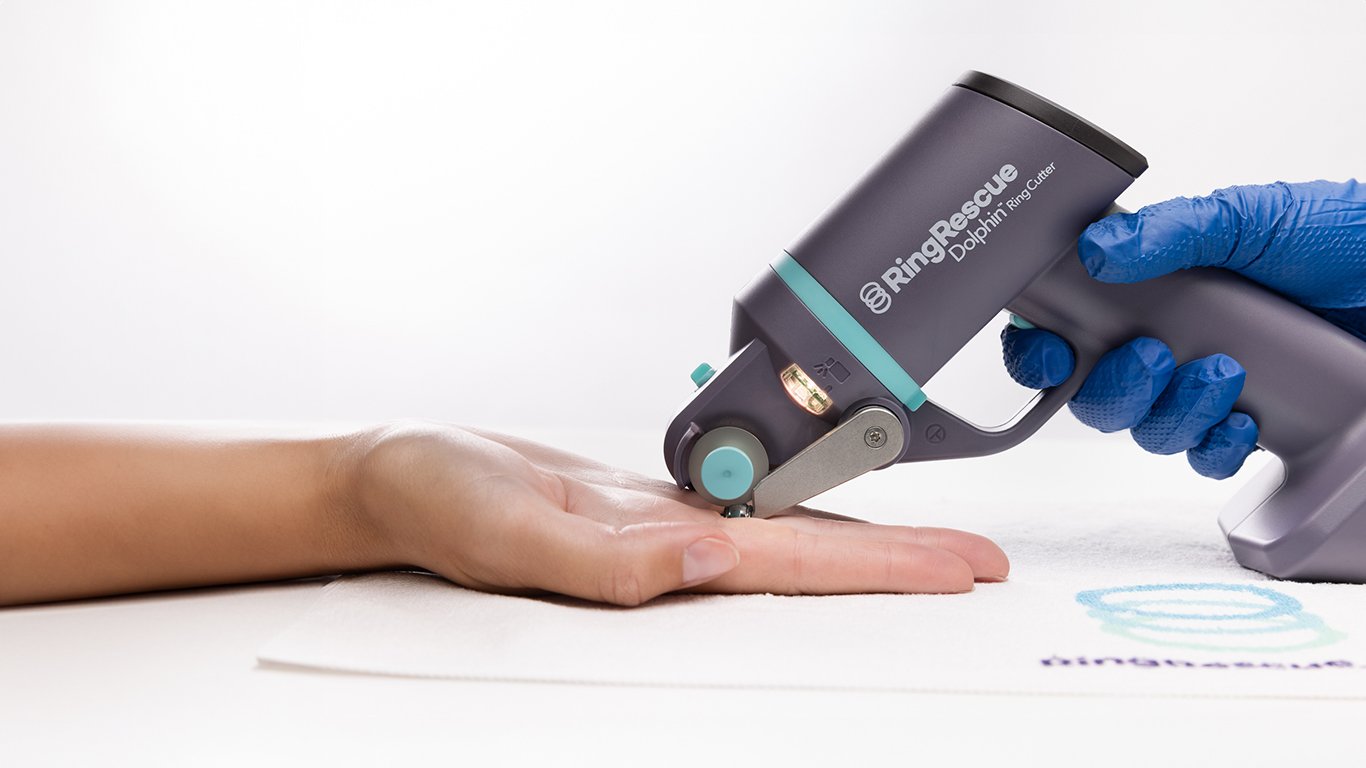Cutting Tungsten Rings - What Are The Risks?
There’s no two ways about it – having a ring get stuck on your finger is a less-than-ideal experience.
It can be painful. It can cause physical damage. And it can give an involuntary sense of feeling confined.
Oftentimes, the road to stuck ring removal ends with cutting the piece of jewelry off – a method that requires a certain level of finesse and caution.
But with tungsten rings, it’s a similar, yet different story.
How?
While rings made of this composite material can be cut, there’s a different set of considerations that come with cutting them to both the patient and the professional working to remove them.
A Brief Look at Tungsten Carbide Rings
Consider tungsten carbide rings the granite of hard-metal jewelry.
A preferred choice for wedding bands and fashion rings alike, tungsten carbide rings boast remarkable hardness and durability. In fact, the metal compound comprising tungsten rings is nearly as hard as diamond.
With this hardness, tungsten rings are highly resistant to scratching and corrosion, making them ideal for those who lead active lifestyles or work with their hands.
Beyond their physical properties, tungsten rings offer a distinctive aesthetic that appeals to many. They often feature a polished, mirror-like finish that retains its shine for years, unlike softer metals that may dull over time.
The Hard Truth About Cutting Tungsten Rings
Next to attempting to pull a stuck ring off a finger carefully, it’s natural to go to the next logical alternative: cutting the ring off.
Can you cut a tungsten ring?
In a word: yes.
However…
With rings made of softer metals (e.g. gold, silver), cutting through the band isn’t much of an issue. Absolutely there are safety precautions needed to protect the ring wearer and the person trying to remove it, but it’s a relatively quick and easy process.
This simply isn’t the case with tungsten rings.
Why?
You guessed it – their strength and durability.
Because of those two factors, cutting through a tungsten ring is … challenging, to say the least, and it requires a bit of horsepower. In other words, a manual ring cutter simply won’t work.
Cutting Tungsten Rings | 3 Major Consideration for Safe Removal
In some instances, those attempting to cut through a tungsten ring have opted for a high-speed rotary tool, such as a Dremel.
And while there are some success stories with this method for tungsten ring removal, it comes with three safety hazards that can create more serious problems for the ring wearer and ring remover. Whether you’re in the emergency department or tending to the patient on-site, tungsten ring removal poses these potential dangers:
Excess heat generation
Airborne cutting debris
Disc slippage
To access the White Paper on this topic please click here.
Excess Heat Generation
Cutting through tungsten carbide generates a significant amount of heat due to the friction between the high-speed rotary tool and the ring.
This heat can cause the tungsten ring to become extremely hot, posing a severe burn risk to the person wearing it. In extreme cases, the heat can be intense enough to cause blistering or more serious burns – all it takes is 4 seconds for a Dremel to create enough heat and friction to cause third-degree burns.
2. Airborne Cutting Debris
Cutting through tungsten carbide produces fine particulate debris that can become airborne. These tiny particles pose respiratory hazards if inhaled, potentially leading to respiratory issues or allergic reactions.
The short-term exposure limit for tungsten carbide as defined by the National Institute for Occupational Health and Safety (NIOSH) is 10 mg/㎥. When measured, the high-speed rotary tool exceeds this threshold as you can see in the graph (pictured right) represented by the yellow line.
Additionally, the debris can cause eye irritation or injury if proper eye protection is not worn.
3. Disc Slippage
The hardness of tungsten carbide can cause cutting discs to slip or even shatter during the cutting process. This poses a serious risk of lacerations to both the person wearing the ring, the individual attempting to remove it and those assisting in the cutting process.
The Safer Way for Tungsten Ring Cutting
You’ve tried everything else to remove a stuck tungsten ring and it simply won’t budge. Cutting it is your next option.
How do you side-step the risks associated with cutting a tungsten ring?
That’s easy. With our Dolphin Ring Cutter tool.
The Dolphin Ring Cutter not only mitigates the burn and laceration risks, it also creates 182x less airborne particles than a high-speed rotary tool and remains well below the short-term exposure limit set by NIOSH. With the Dolphin, you can feel comfortable that you and your patient are not inhaling those harmful airborne debris or at risk of getting cut or burnt.
And most importantly, it gets the ring off without adding additional stress or anxiety for the patient.
Making Cutting a Tungsten Ring More of a Non-event
Getting a stuck ring of any type off of a finger is already a delicate – and sometimes stressful – procedure to begin with. The last thing you should be worrying about is causing more harm to the ring wearer during your effort.
But if cutting the ring is the only option left, staying far ahead of potential dangers in removing it makes for a far better conclusion than any other alternative.
Another Alternative to Tungsten Ring Removal
Our Compression Device is another tool that can help you easily remove a stuck tungsten ring with little risk. The best part? You don’t need to cut the ring, thereby preserving the piece of jewelry.
Learn more about it here.
For a more robust exploration on the methods available and associated risks for cutting stuck tungsten carbide rings, watch the video below by Emergency Medicine Physician and YouTube Star (617k subscribers) Dr. Larry Mellick below.
To purchase the Dolphin Ring Cutter, please visit ringrescue.com/order-now.



